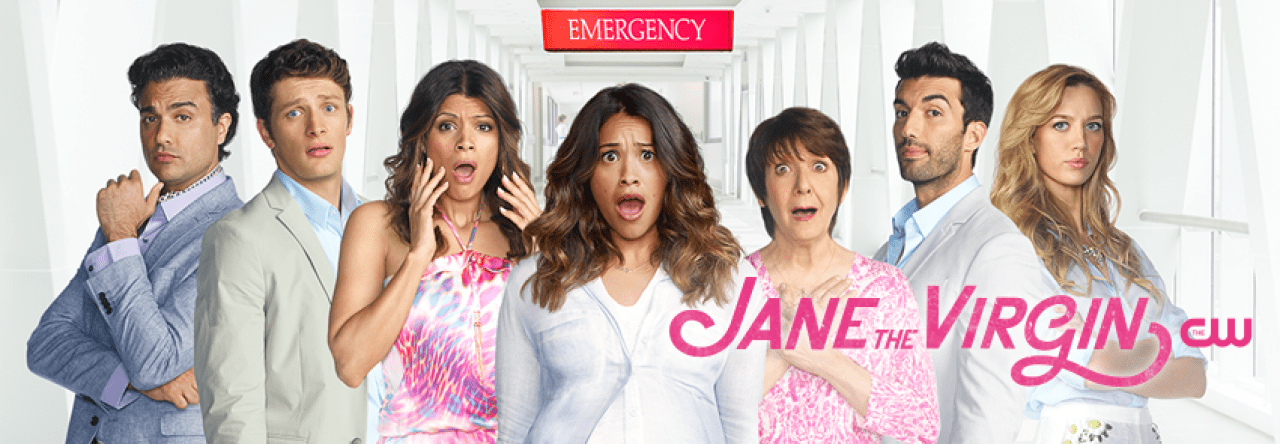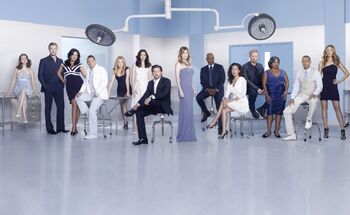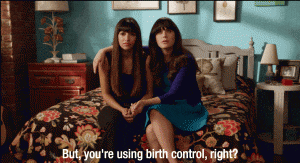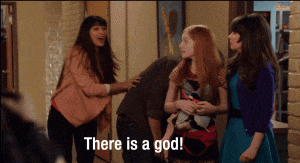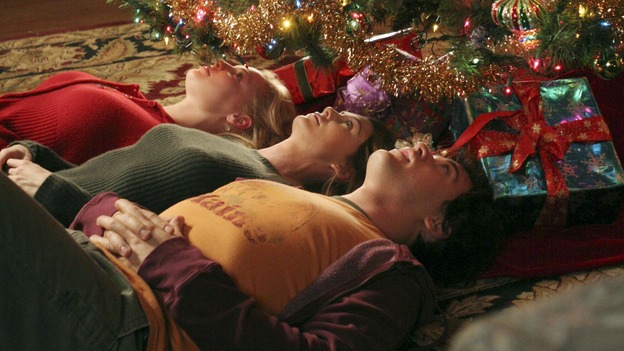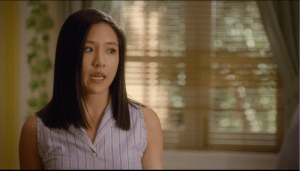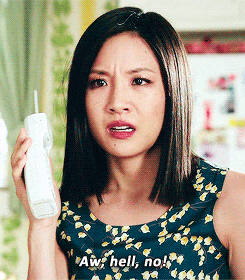In the fourth episode of the Netflix Original Series, Orange is the New Black, several arguments are presented that fit within larger cultural discussions. To support those contentions, the show’s producers employ literary elements to aid in their deliveries.
Perhaps, the strongest argument in the show arises towards the beginning of the episode. During this scene, Piper’s roommate, Ms. Claudette, orders her to clean up a mess in their cell block that was left behind by another inmate. As Piper removes the stains, Ms. Claudette teases her for being ill-equipped to handle the disarray because of her privileged background. In the middle of this segment, a flashback is shown where Ms. Claudette is introduced to a maid-service as a child. The use of the flashback, the apparent age difference between Ms. Claudette and Piper, and Ms. Claudette’s demeanor toward Piper in this situation illustrate that her expectations of Piper are not unfounded. In other words, in spite of Piper’s upbringing, Ms. Claudette expects her to perform tasks that she had to do as a child. This particular scene is a key reflection of how millennials in society are held to a much lower standard than individuals who were raised in periods where morals and values were highly revered.

Ms. Claudette as a young girl
The show delivers another thought-evoking message halfway through the episode. In this segment, Red, a well-respected inmate hands a business card of one of her close associates outside the prison to a convict who has an upcoming release date. The act in this scene certainly relates to the cultural conversation of how difficult it is for ex-convicts to find jobs. Even more, the occupations that some former inmates end up settling in are far from their desired destinations. In addition to that, the scene extends the discussion of how recently released inmates are more likely to end up behind bars if they don’t obtain employment. Lastly, this segment provides an excellent demonstration of one of the show’s themes in which one must find opportunities in the least of circumstances to foster their own personal growth.
The argument that most closely relates to the title of the episode, Imaginary Enemies, arises when Piper gathers the courage to stand up for herself. In this segment, Piper voices her frustrations toward Ms. Claudette, who attempts to scold Piper for lying to her. During this exchange, other inmates focus in on the situation to witness the actions that Ms. Claudette will take. However, to their dismay, Ms. Claudette does not retaliate and instead, listens to Piper and smirks once she walks away. This display, in some ways, echoes the notion that those who are willing to express their opinions are sometimes frowned upon as agitators. On the contrary, those who do so appropriately are able to establish and maintain better relationships with their peers. Also, this scene conveys that individuals who exhibit this behavior showcase the ability to share their beliefs without having to compromise those of others.
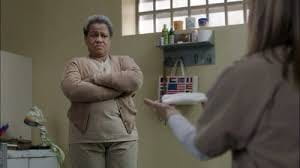
Piper’s Confrontation with Ms. Claudette
Throughout the fourth episode of the first season, several assertions come about that help advance the plot in the series and introduce many culturally relevant discussions. The show’s producers present these arguments to the audience with the assistance of dialogue between characters and well-timed flashbacks. Upon closer analysis, it is apparent that many of the contentions made in the episode have some connection with interpersonal characteristics and societal awareness.
